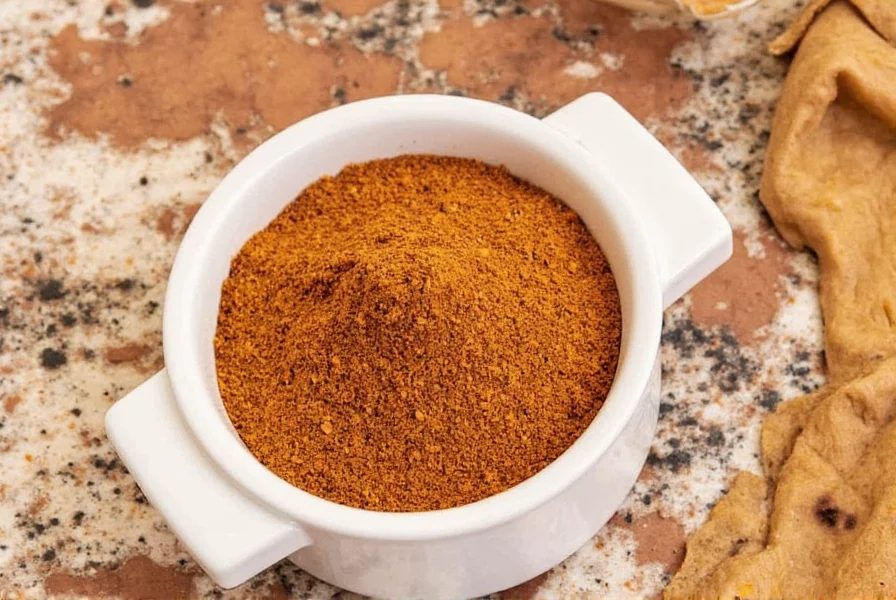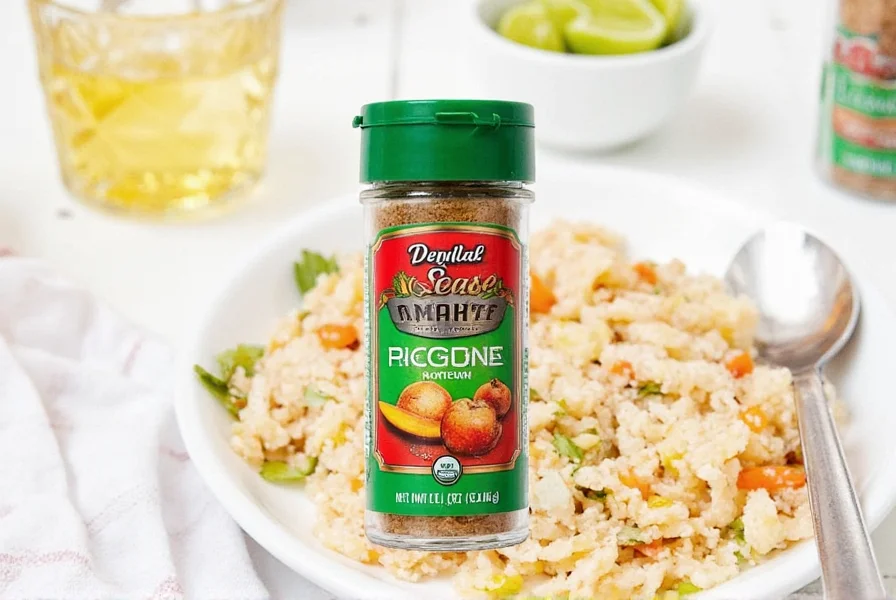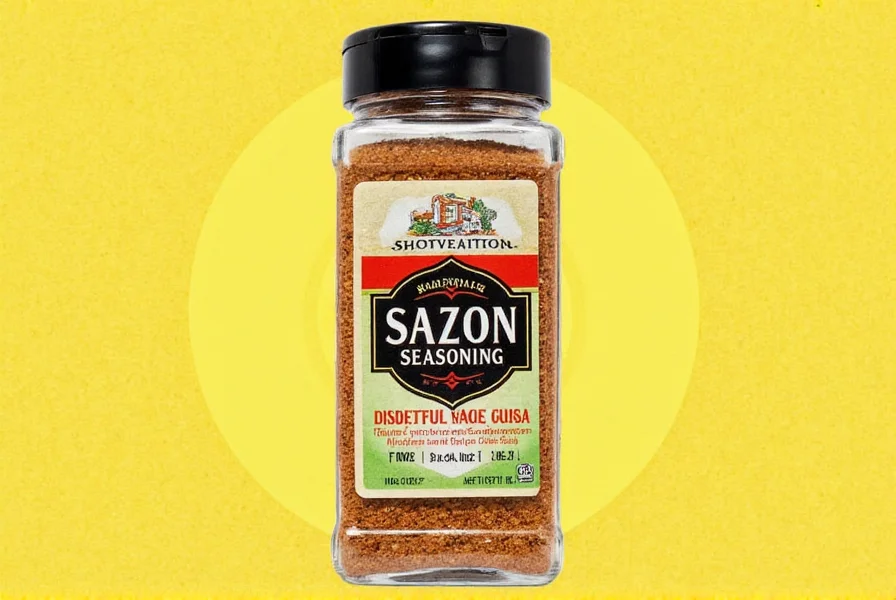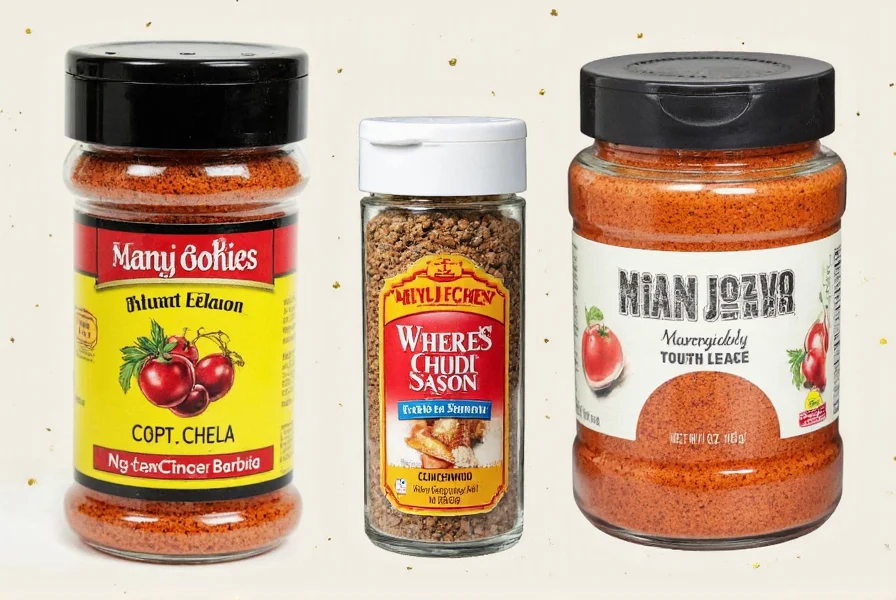Running out of sazon seasoning? Don't panic! Here are 10 effective substitutes to keep your Latin dishes flavorful without a trip to the store. Whether you need a quick fix or a homemade blend, these options work for any recipe.
Sazon seasoning is a staple in Latin American cuisine, especially in Puerto Rican and Dominican dishes. It's more than just a spice blend—it's a flavor bomb that gives depth to rice, beans, meats, and stews. But when you're out of stock, these alternatives will save your meal.
| Replacement | Flavor Profile | Best For | When to Use |
|---|---|---|---|
| Homemade Sazon Blend | Customizable, bold, warm | Dishes where authenticity matters | If you want full control over salt and spice levels |
| Goya Adobo with Sazon | Mild, savory, slightly garlicky | Quick meals needing convenience | If you need something pre-made but similar |
| Old San Juan Seasoning | Richer, smokier than standard sazon | Stews, meats, and robust dishes | If you prefer deeper, more intense flavor |
| Tacoma Sazón | Traditional, no MSG version | Cooking for health-conscious guests | If you avoid MSG but still want classic taste |
| Adobo Seasoning | Salty, garlicky, citrusy | Meats, vegetables, marinades | If you want a base layer of flavor without annatto |
| Chili Powder | Spicy, earthy, cumin-forward | Mexican-style dishes | If you're substituting in Tex-Mex recipes |
| Paprika + Cumin + Garlic | Mellow, aromatic, slightly sweet | Subtle flavor profiles | If you want to mimic sazon gently |
| Annatto Oil + Salt & Pepper | Earthy, nutty, slightly floral | Dishes needing color and aroma | If you only need the coloring and aroma, not the full blend |
| Curry Powder | Exotic, spicy, layered | Experimental cooking | If you're open to fusion flavors |
| Trader Joe's Latin Seasoning | Fruity, bright, balanced | Weeknight dinners | If you shop at TJ's and like mild, all-purpose blends |

1. Homemade Sazon Blend
Want the most authentic substitute possible? Make your own! This gives you complete control over ingredients, letting you tweak the level of heat, salt, or garlic based on your preferences.
DIY Sazon Recipe:- 2 tbsp ground annatto
- 1 tbsp cumin
- 1 tbsp garlic powder
- 1 tsp coriander
- ½ tsp chili powder
- ½ tsp black pepper
- 1 tsp salt (adjust to taste)

Mix well and store in an airtight container. Use as needed in your favorite dishes.
2. Goya Adobo with Sazon
This is the closest commercial substitute to traditional sazon seasoning. While it's not pure sazon, it includes many of the same elements—garlic, cumin, and annatto—and often includes a bit of MSG for extra punch.
Perfect for quick weeknight meals or when you're out of time. Just sprinkle on chicken, pork, or veggies before roasting or grilling.
3. Old San Juan Seasoning
A stronger, smokier alternative to traditional sazon. It works wonders in dishes that need more depth and intensity—think slow-cooked stews or roasted meats.
If you enjoy a bolder flavor profile, this is your go-to replacement. It's great for enhancing grilled seafood or hearty bean soups.

4. Tacoma Sazón
Looking for a version without MSG? Tacoma offers a clean-label option while keeping the essence of sazon intact. It's perfect if you're cooking for health-conscious friends or family members.
Use it just like regular sazon: toss with chicken, rub onto ribs, or mix into rice dishes for that familiar golden hue and rich taste.
5. Adobo Seasoning
Not exactly sazon, but very close in many ways. Adobo typically includes garlic, oregano, vinegar, and sometimes lime. It lacks the earthy warmth of annatto and cumin found in sazon, but it still layers beautifully into Latin dishes.
Great for marinating meats or sprinkling over potatoes before roasting. If you're short on time, adobo gets the job done.
6. Chili Powder
While traditionally used in Mexican dishes, chili powder shares some key ingredients with sazon—like cumin and paprika. It brings a little more heat and sweetness, so adjust accordingly.
Best for tacos, enchiladas, or chilies where the flavor doesn't have to be authentically Puerto Rican but still needs that Latin flair.
7. Paprika + Cumin + Garlic
Need a milder substitute that won't overpower your dish? Try mixing paprika, cumin, and garlic powder. This trio mimics the color and warmth of sazon without the heaviness.
Ideal for lighter fare like white fish, shellfish, or vegetable medleys. It's also a great way to introduce kids or picky eaters to new flavors without scaring them off.

8. Annatto Oil + Salt & Pepper
Annatto oil is made by infusing oil with annatto seeds. It brings that signature orange-red hue and a subtle nutty, peppery flavor.
If you're cooking something that relies on sazon for its color rather than its spice blend, annatto oil is your secret weapon. Add salt and pepper to bring balance and depth.
9. Curry Powder
It might seem unconventional, but curry powder actually shares many spices with sazon—especially turmeric, cumin, and coriander. The result? A fusion twist that can work surprisingly well.
Try using it in coconut-based dishes or when making plantains with a global flair. Not ideal for strict authenticity, but definitely fun to experiment with!
10. Trader Joe's Latin Seasoning
If you're already heading to Trader Joe's, grab a bottle of their Latin Seasoning. It's got a bright, fruity edge with hints of citrus and dried herbs.
Great for taco night, roasted squash, or a zesty grain bowl. A solid all-around choice when you don't feel like mixing your own spices.
How to Choose the Right Replacement
Selecting the right sazon seasoning replacement depends on these key factors:
- Recipe type: Traditional Puerto Rican dishes may require closer substitutes, while fusion recipes can handle more experimentation.
- Flavor preference: Do you like things smoky, spicy, or mild? Adjust your choice accordingly.
- Availability: Sometimes you just need something that's already in your pantry or easy to grab from the store.
- Dietary restrictions: Look for options without MSG or artificial additives if that matters to you.
What's the closest substitute for sazon seasoning?
The closest substitute for sazon seasoning is either a homemade blend using annatto, cumin, garlic powder, and coriander, or Goya Adobo with Sazon. These options replicate both the flavor profile and vibrant color that makes sazon special. If you need something immediately available at most grocery stores, a combination of paprika, cumin, and garlic powder will give you the most similar flavor, though it won't have the distinctive orange-red color.
Can I make sazon without annatto?
Yes, you can make a sazon-like blend without annatto, but you'll lose the signature golden-orange color. Annatto is primarily used for color rather than strong flavor. To compensate, you can use paprika for color and add a bit more cumin and garlic for depth. For a complete substitute, mix 1 tbsp paprika, 1 tbsp cumin, 1 tbsp garlic powder, 1 tsp coriander, ½ tsp chili powder, ½ tsp black pepper, and 1 tsp salt. This will give you the flavor profile without the traditional sazon color.
How much substitute should I use when replacing sazon?
When substituting for sazon, use approximately the same amount you would for regular sazon seasoning (typically 1-2 teaspoons per serving). However, be cautious with salt content, as many sazon blends already contain salt. If your substitute doesn't include salt (like a homemade blend where you control the salt), you may need to adjust salt separately in your recipe. For store-bought alternatives like adobo, start with slightly less than the sazon amount called for, as these often have higher salt content.
What's the difference between adobo and sazon seasoning?
While both are popular Latin seasonings, adobo and sazon have key differences. Sazon contains annatto for color plus cumin, garlic, and coriander, giving it an earthy, warm flavor with vibrant color. Adobo typically contains garlic, oregano, black pepper, and sometimes vinegar or citrus, but lacks annatto and cumin. Adobo is saltier and more garlicky, while sazon provides color plus a more complex earthy flavor. You can use adobo as a base substitute but will need to add cumin and paprika/annatto for a closer match to sazon.
Can I use sazon substitutes in non-Latin dishes?
Absolutely! Sazon substitutes work well beyond traditional Latin cuisine. The paprika-cumin-garlic combination is excellent for roasted vegetables, potato dishes, or even in tomato-based pasta sauces. Annatto oil adds beautiful color to rice dishes of any cuisine. Curry powder as a sazon substitute works particularly well in coconut-based curries or with plantains for a fusion twist. The key is understanding the flavor profile of your substitute and how it complements the other ingredients in your dish.
How long do homemade sazon substitutes last?
Homemade sazon blends typically last 6-12 months when stored properly in an airtight container away from heat and sunlight. The ground spices will gradually lose potency over time, so for best results, make smaller batches (enough for 2-3 months of regular use). Annatto-based blends may develop a slightly stronger flavor as they age. Always check for freshness by smelling the blend—if it has little aroma, it's time to make a new batch. Avoid introducing moisture to the container, as this can cause clumping and shorten shelf life.
Final Thoughts
Running out of sazon seasoning doesn't have to ruin your dinner plans. With these smart substitutes, you can keep your kitchen game strong—even on a rainy Tuesday night with zero time to spare.
Whether you opt for homemade sazon, reach for a bottle of Goya, or go wild with curry powder, there's a replacement that fits your recipe and lifestyle. Don't be afraid to experiment—you might just discover a new flavor combo that becomes your next favorite thing.

Now go forth, spice boldly, and never again panic when the sazon runs out.











 浙公网安备
33010002000092号
浙公网安备
33010002000092号 浙B2-20120091-4
浙B2-20120091-4